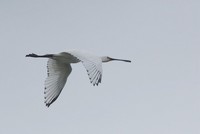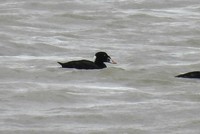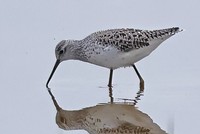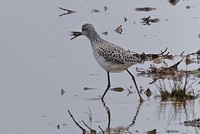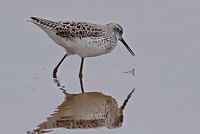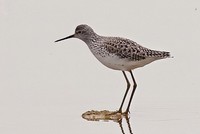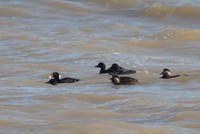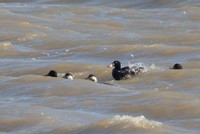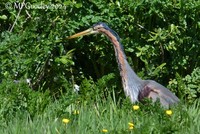Night Parrot fledgling photographed, the first for 100 years
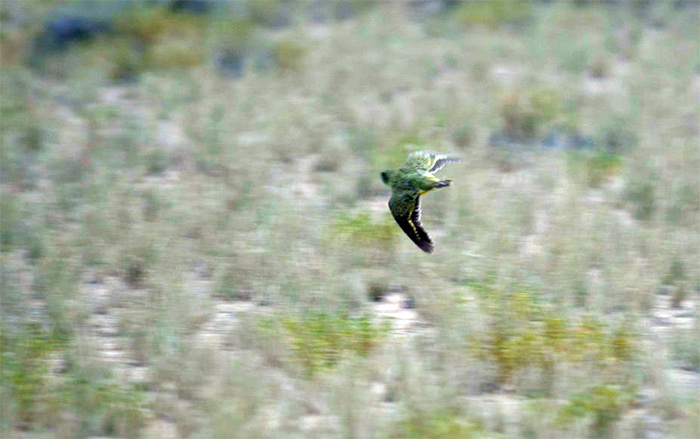
Scientists have sighted a fledgling Night Parrot for the first time at Bush Heritage Australia’s Pullen Pullen Reserve in Queensland, confirming the 56,000-hectare nature refuge is successfully protecting a breeding population of one of the world’s rarest birds.
A young fledgling appeared from a hummock of spinifex in the late afternoon, and University of Queensland scientists Nick Leseberg and James Watson were able to photograph and observe the fledgling from a safe distance.
“It was amazing, and we are privileged because this is the first Night Parrot fledgling that has been seen or recorded in nearly 100 years,” said PhD candidate Nick Leseberg.
“We had sound recording gear with us and as night fell, we recorded a quiet whinnying call. We suspect this was the fledglings responding to the parent who had landed nearby and was calling to them – this call has never been recorded before,” he said.
The fledgling was observed at Pullen Pullen as part of Bush Heritage Australia’s ongoing Night Parrot research and recovery program that is building new knowledge about the rare, rediscovered bird.
Over three years, researchers led by Australia’s foremost Night Parrot expert, Dr Steve Murphy, have spent more than 250 days in the field at Pullen Pullen. They have carried out the world’s first GPS-tracking of the nocturnal birds, installed 60 song meters (sound recorders) in the landscape, and collected a staggering 20 years of recordings that contain more than 5,000 Night Parrot calls.
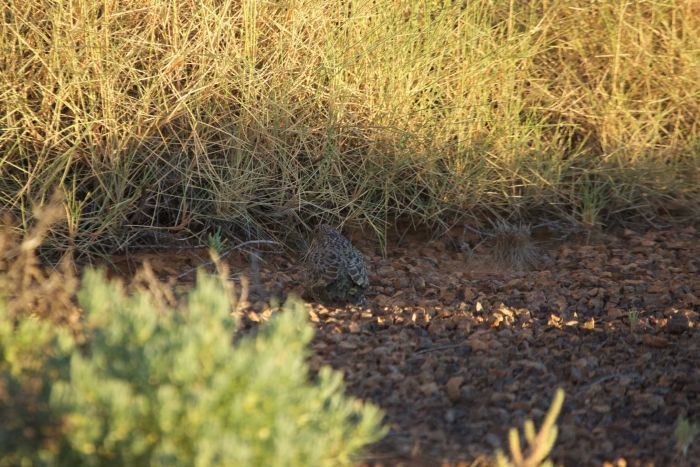
“Who on Earth would have thought just a few years ago that we would be radio-tracking Night Parrots and recording their calls,” said Dr Murphy.
“We’ve taken a great leap forward in understanding that the birds use a range of habitats beyond spinifex, including flood plains, ironstone plains and rises,” he said.
“This has made a huge difference to our ability to find Night Parrots in the landscape.
“We have also tracked Night Parrots visiting free-standing water points, which means we now know they don’t just rely on plants for their water needs and are more vulnerable than we first thought to predation from feral cats along creek lines,” said Dr Murphy.
Dr Murphy is part of a team of independent scientists and experts working with Bush Heritage to increase the Night Parrot’s chances of survival.
The research effort has also discovered that Night Parrots fly at least 40km in a night – a far greater distance than the closely related eastern ground parrot that travels only a few kilometres at night.
“The research program and its findings are critical to our conservation work at Pullen Pullen and the decisions we are making to protect this population of Night Parrots,” said Rob Murphy, Bush Heritage’s Executive Manager, North.
“For the first time, Australia is discovering what Night Parrots do at night because we have successfully tracked an adult bird using a tiny GPS tag. This is incredibly important for our ongoing work to protect this rare species,” said Murphy.
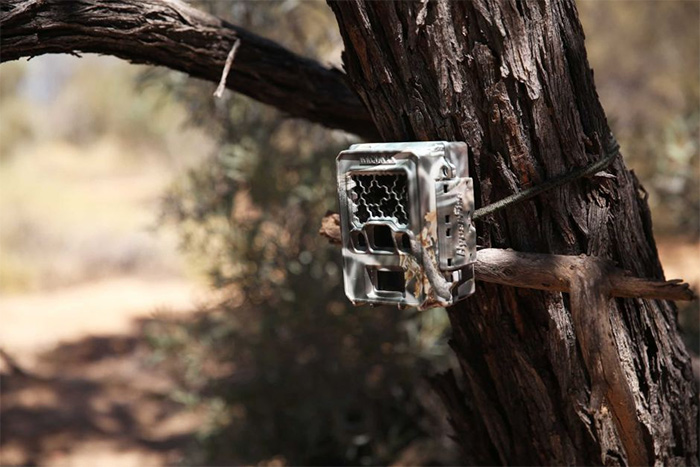
Bush Heritage has been carefully monitoring feral cat numbers at Pullen Pullen using remote camera traps, regular surveillance patrols, cat grooming trap trials and cat detector dogs.
“By bringing together these management actions with ongoing research into the ecology of the species, we are achieving integrated conservation measures that are vital for protecting the Night Parrot,” said Murphy.
The next steps in the research program at Pullen Pullen involve further study into what plant species Night Parrots feed on and what habitats they use seasonally over the year; investigation of their breeding biology, including nesting success rates and how climate and landscape conditions affect nesting; and what impact climate change may have on Night Parrot survival.
This ongoing research will be supported by the University of Queensland, Bush Heritage Australia and the Australian Government’s National Environmental Science Programme through the Threatened Species Recovery Hub.
25 November 2016

